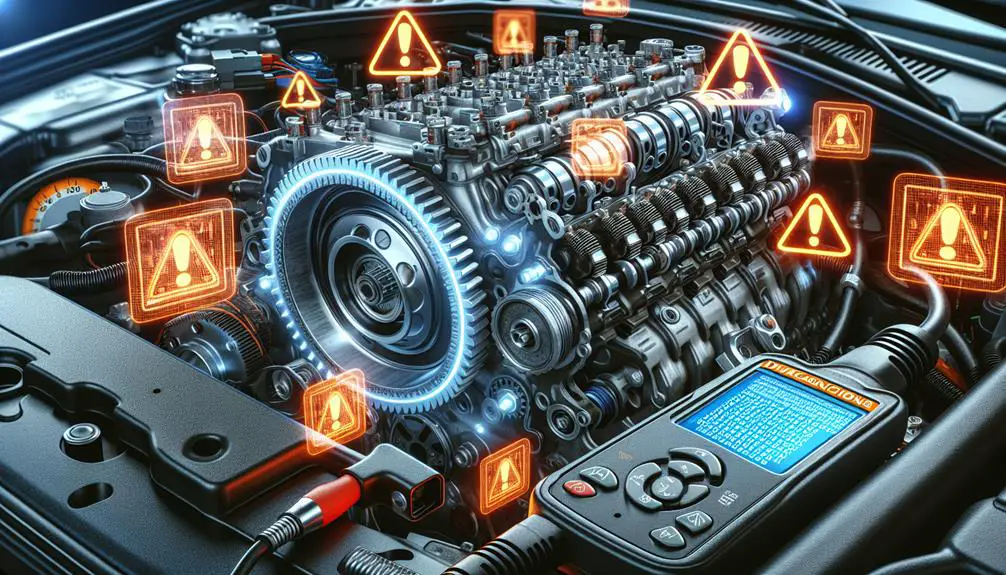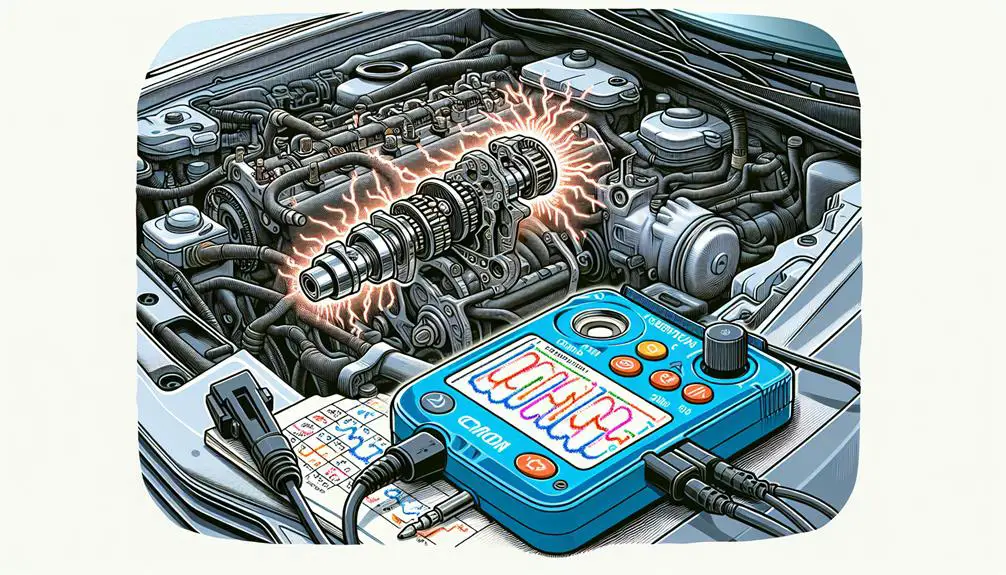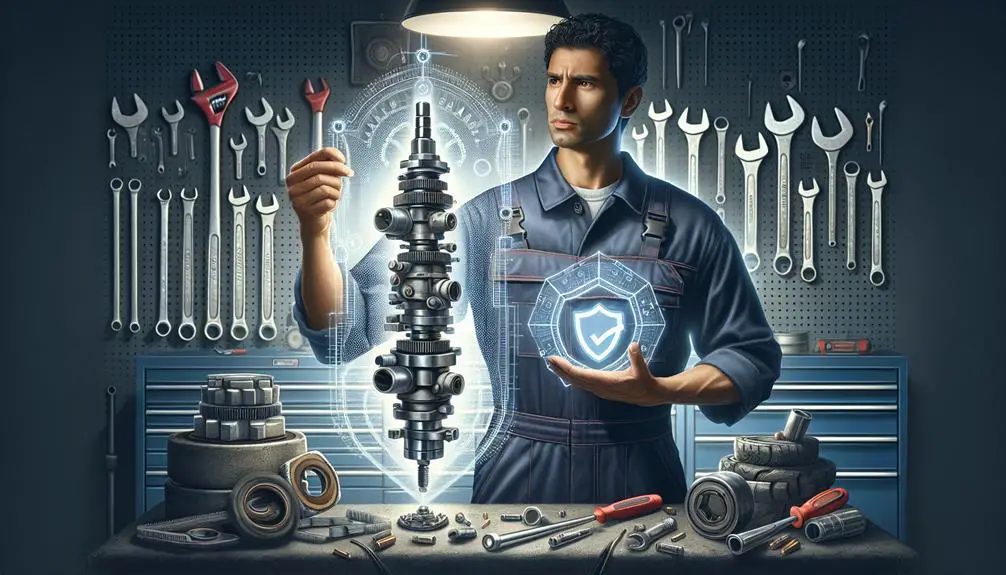These issues can be addressed by replacing the camshaft sensor with a new, quality part to ensure the proper functioning of the engine. Ignoring these symptoms may lead to more severe engine problems and potential breakdowns. Regular maintenance and timely replacement of faulty sensors are crucial for the overall health and longevity of the vehicle.
Identifying Camshaft Sensor Issues

If your Hyundai Elantra starts experiencing rough idling or unexpected stalling, it might be time to check the camshaft sensor. This key component keeps your engine running smoothly by monitoring the position of the camshaft and adjusting the engine's timing accordingly. When it fails, your Elantra won't perform as it should.
You're not just looking for obvious signs; grasp what's happening under the hood is pivotal. The camshaft sensor plays a critical role in your car's ignition and fuel system, directly influencing engine performance. If it's malfunctioning, it won't send the correct information to your car's computer (ECM), leading to a range of engine issues.
Tackling this problem early can save you a lot of headaches down the road. You'll want to get your hands on a diagnostic tool or visit a professional to confirm your suspicions. These tools can read the error codes generated by your car's computer, pinpointing whether the camshaft sensor is the culprit.
Common Symptoms and Signs
Grasping the camshaft sensor issues in your Hyundai Elantra is the initial step; now, let's look at the common symptoms and signs to watch for. When your Elantra's camshaft sensor starts failing, it doesn't just whisper its problems; it shouts them through your driving experience and vehicle's performance. Recognizing these warning signs early can save you from a stranded situation or costly repairs down the line.
Here are some key symptoms to be on the lookout for:
- Check Engine Light: One of the primary signs you'll notice is the check engine light illuminating on your dashboard. While this can indicate different issues, it's often related to sensor malfunctions when coupled with other symptoms.
- Rough Idling: Your Elantra might start to idle roughly or stall when at a stop, feeling as though it might cut off.
- Poor Acceleration: You might experience poor or sluggish acceleration, as the engine isn't receiving the correct information on timing.
- Decreased Fuel Efficiency: A failing camshaft sensor can lead to decreased fuel efficiency, as the engine timing might be off, causing your car to use more fuel.
Paying attention to these signs can help you catch a failing camshaft sensor before it leads to more significant issues.
Potential Causes and Diagnostics

Comprehending your Hyundai Elantra's camshaft sensor issues involves delving into potential causes and conducting thorough diagnostics. When you're faced with camshaft sensor problems, grasping the root causes is essential. These may range from simple electrical issues to more complex mechanical failures. Diagnosing the problem accurately saves you time and money, ensuring your Elantra runs smoothly again.
| Cause | Emotion | Impact on Vehicle |
|---|---|---|
| Electrical Wiring Damage | Frustration | Erratic engine behavior |
| Faulty Camshaft Sensor | Anxiety | Unpredictable driving experience |
| Timing Belt Wear | Concern | Potential engine damage |
| Dirty or Clogged Sensor | Annoyance | Decreased fuel efficiency |
| ECU (Engine Control Unit) Issues | Overwhelm | Total vehicle malfunction |
Diagnosing these issues often starts with scanning your vehicle for error codes using a diagnostic tool. This step is vital as it guides you towards the specific problem area. Remember, correctly identifying the cause is half the battle in resolving camshaft sensor problems. Don't skip this critical step; it's your roadmap to a smooth-running Elantra.
Step-by-Step Repair Guide
Having identified the root causes of your Hyundai Elantra's camshaft sensor issues, it's time to tackle the repairs step by step. This guide will walk you through the process, ensuring you can get your vehicle running smoothly again.
First, ensure your car is parked on a flat surface and that the engine is cool. You'll need to disconnect the battery to prevent any electrical accidents. The camshaft sensor is usually located at the front or side of the engine, near the top.
Here's what you'll need to do:
- Locate the camshaft sensor: Refer to your Elantra's manual for the exact location and appearance of the sensor.
- Remove the sensor: Carefully disconnect the sensor's connector. Remove any mounting bolts or clips holding the sensor in place. Pull the sensor out gently.
- Install the new sensor: Place the new sensor in the exact position of the old one. Secure it with the mounting bolts or clips and reconnect the connector.
- Reconnect the battery: Once everything is in place, reconnect your battery.
Before starting your car, double-check all connections to ensure everything is secure. Starting your Elantra now should show a significant improvement if the camshaft sensor was the culprit.
Preventative Measures and Tips

To prevent future camshaft sensor issues in your Hyundai Elantra, it's crucial to follow a few maintenance tips and adopt some preventative measures. Regular maintenance not only extends the life of your vehicle but also guarantees its components, like the camshaft sensor, function properly. Here's how you can keep your Elantra running smoothly and avoid potential sensor problems down the line.
| Maintenance Task | Frequency | Why It's Crucial |
|---|---|---|
| Oil Changes | Every 5,000 miles | Clean oil guarantees minimal contaminants come into contact with the camshaft sensor and other crucial engine components. |
| Check Engine Codes | At the initial sign of trouble | Early detection of error codes can prevent larger issues with the camshaft sensor and related systems. |
| Regular Inspections | Annually | A professional mechanic can spot early signs of wear and tear or potential problems before they escalate. |
Conclusion
You've now got the lowdown on Hyundai Elantra camshaft sensor problems. From recognizing the early warning signs to comprehension the root causes, you're well-equipped.
With the step-by-step repair guide, tackling the issue head-on is straightforward. Remember, prevention is key. Regular check-ups and being mindful of the symptoms can save you a lot of trouble.
Keep these tips in your back pocket, and you'll guarantee your Elantra runs smoothly for miles to come.